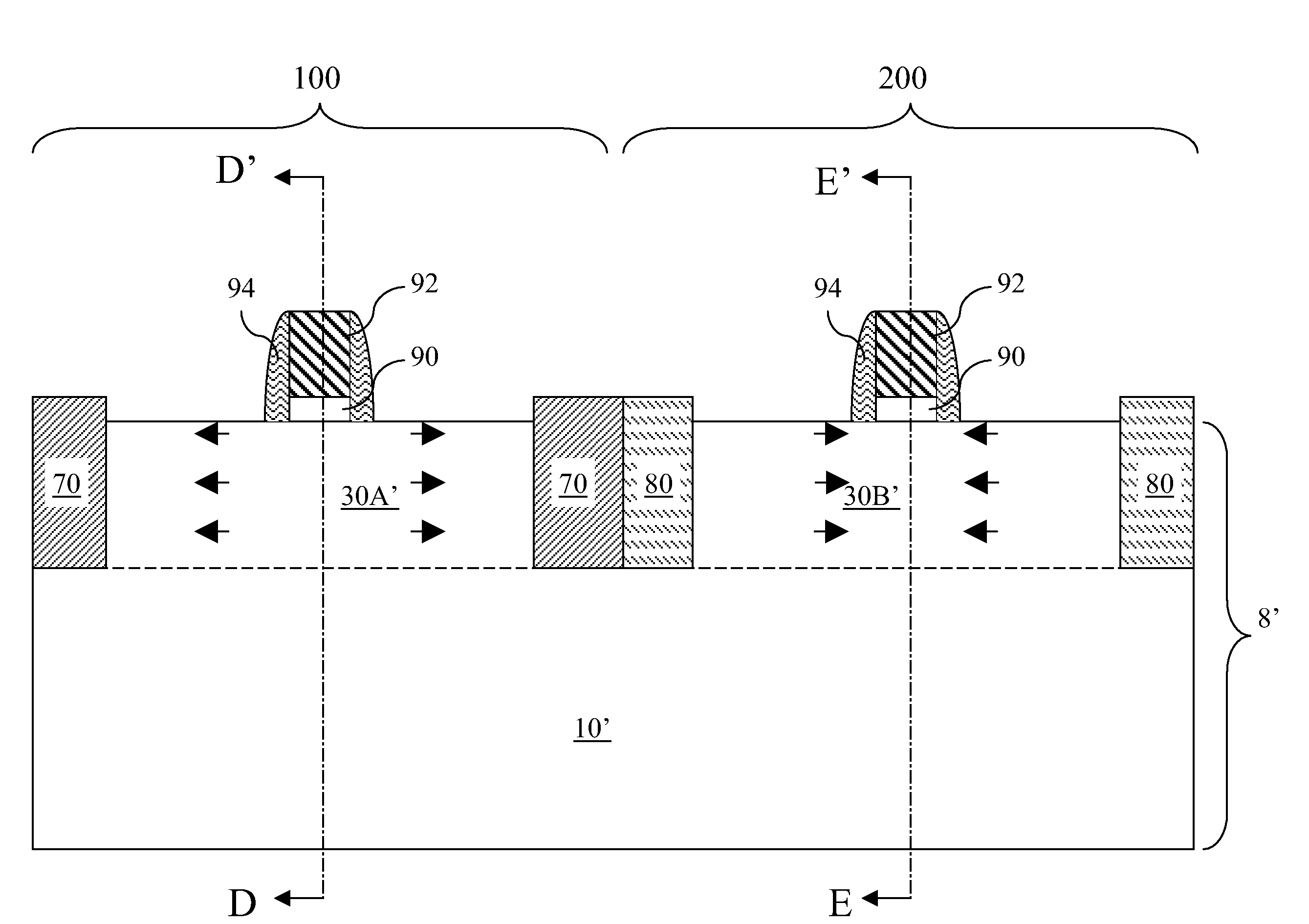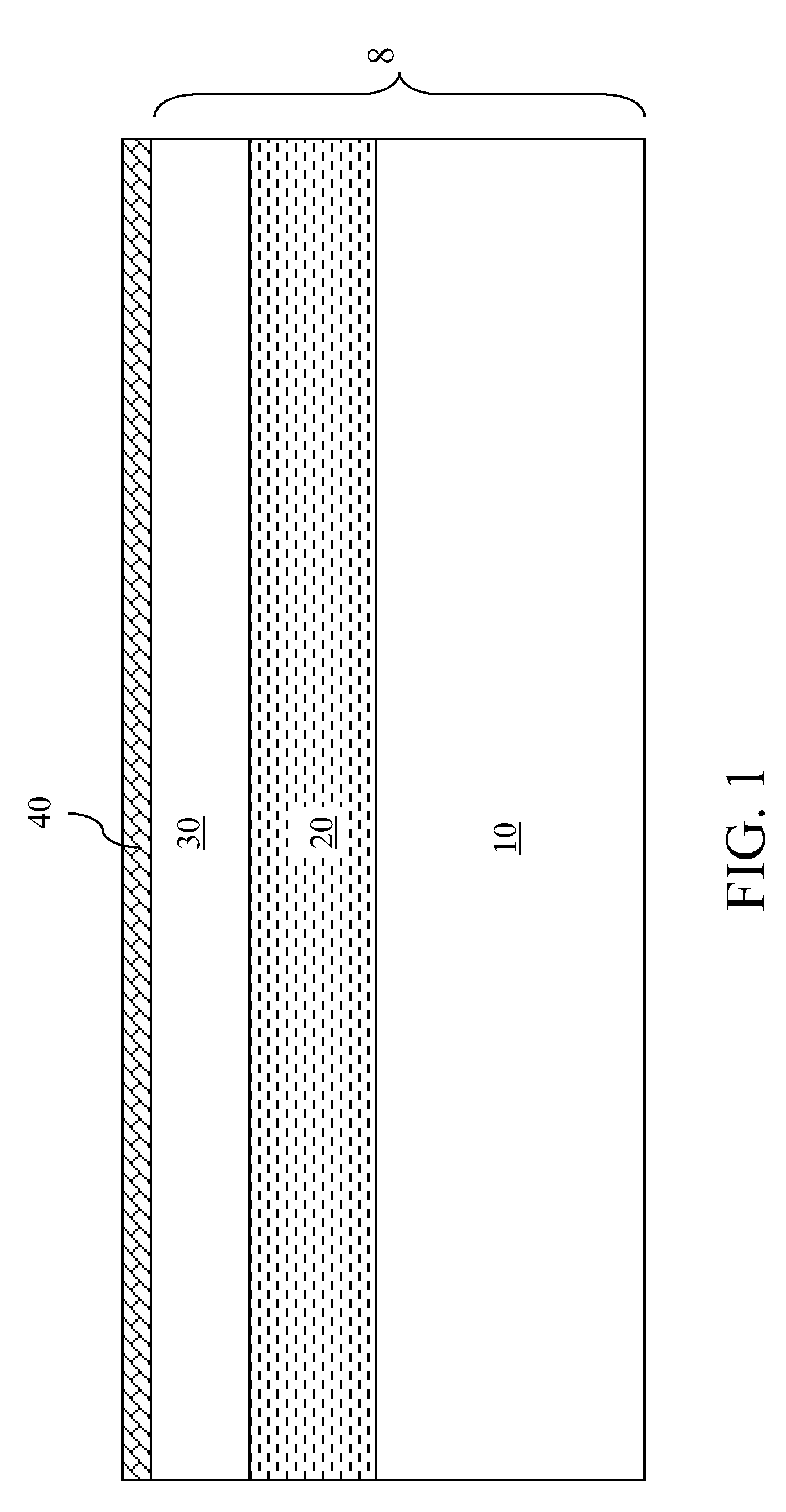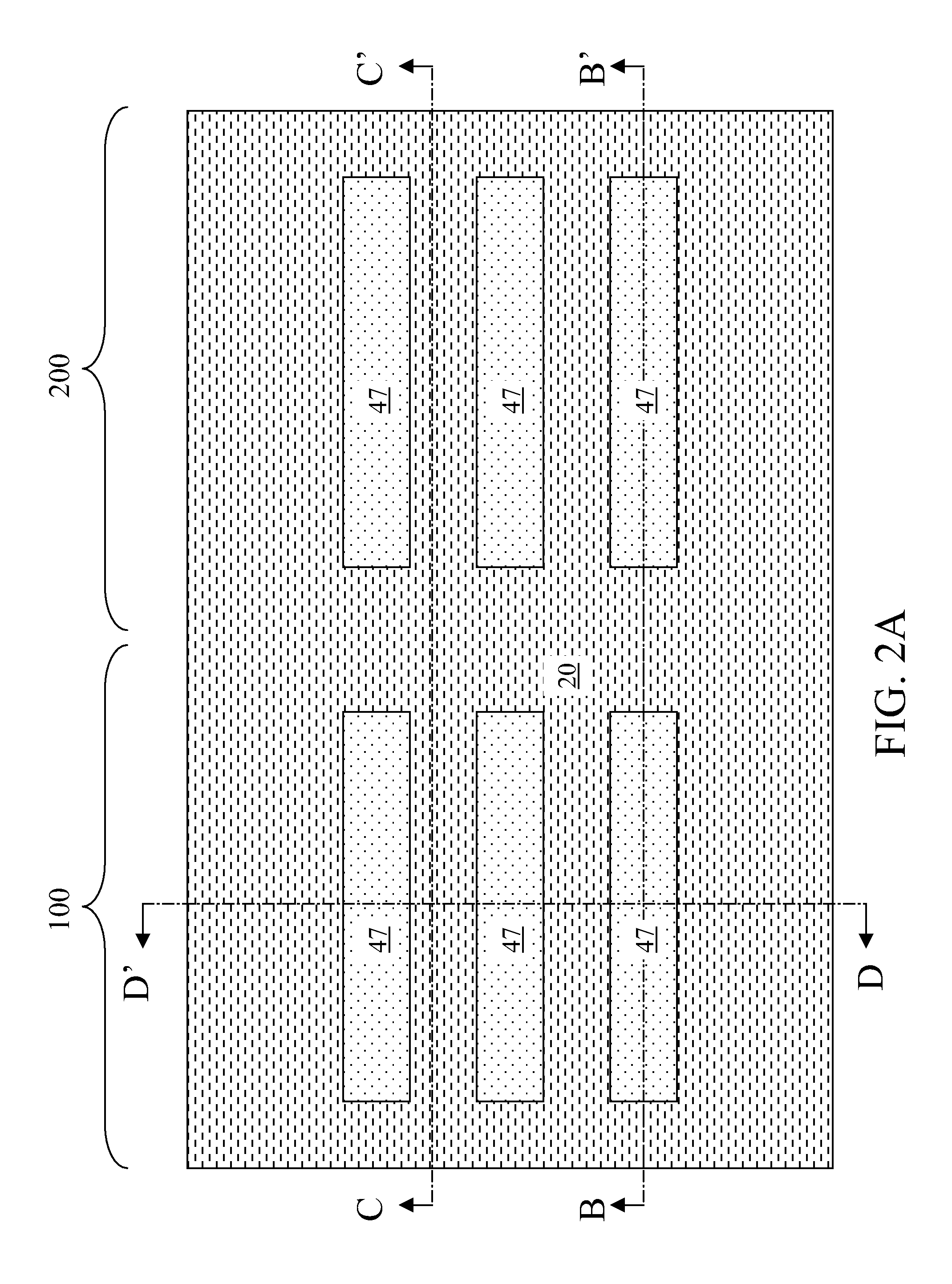Stress-generating shallow trench isolation structure having dual composition
a technology of isolation structure and stress generation, which is applied in the direction of electrical equipment, semiconductor devices, semiconductor/solid-state device details, etc., can solve the problems of disadvantageous to the enhancement of performance of pmosfet, no mechanism is provided to reverse the stress direction, and the magnitude of stress tends to decay rapidly, so as to achieve different stress-generating properties, enhance charge carrier mobility, and enhance the effect of stress generation
- Summary
- Abstract
- Description
- Claims
- Application Information
AI Technical Summary
Benefits of technology
Problems solved by technology
Method used
Image
Examples
first embodiment
[0117]As in the first embodiment, a first channel C1 is formed in each of the middle portion of the at least one first active area 30A that vertically abuts a gate dielectric 90 in the first device region 100. The first shallow trench isolation portion 70 comprising the first shallow trench isolation material applies a first longitudinal stress along a lengthwise direction in the first channel C1 and a first transverse stress along a widthwise direction of the first channel C1.
[0118]A second channel C2 is formed in each of the middle portion of the at least one second active area 30B that vertically abuts a gate dielectric 90 in the second device region 100. The shallow trench isolation structure (70, 80) comprising the first shallow trench isolation portion 70 and the second shallow trench isolation portion 80 applies a second longitudinal stress along a lengthwise direction in the second channel C2 and a first transverse stress along a widthwise direction of the second channel C2....
third embodiment
[0123]Referring to FIG. 9A, a result of a simulation for longitudinal stress and transverse stress distribution at the center of a channel of an n-type field effect transistor according to the present invention is shown. The simulation assumes a nested array of first active areas comprising silicon and having a width of 100 nm and a depth of 400 nm, which is the same as the depth of the first shallow trench isolation portion 70 and the second shallow trench isolation portion 80. Each of the first active areas constitutes an instance of the n-type field effect transistor. The first shallow trench isolation portion 70 comprises a tensile-stress-generating silicon nitride, which applies a tensile stress of about 1.5 GPa to surrounding regions that abut the first shallow trench isolation portion 70. The second shallow trench isolation portion 80 comprises a silicate glass and has an inherent stress level less than 100 MPa, and typically less than about 30 MPa.
[0124]The third exemplary s...
fourth embodiment
[0127]Referring to FIG. 9C, a result of a simulation for an n-type field effect transistor according to the present invention is shown. The simulation assumes a nested array of first active areas comprising silicon and having a width of 100 nm and a depth of 400 nm, which is the same as the depth of the first shallow trench isolation portion 70 and the second shallow trench isolation portion 80. In this case, the first shallow trench isolation portion 70 completely surrounds each of the first active areas, which constitutes an instance of the n-type field effect transistor. The first shallow trench isolation portion 70 comprises a tensile-stress-generating silicon nitride, which applies a tensile stress of about 1.5 GPa to surrounding regions that abut the first shallow trench isolation portion 70.
[0128]The fourth exemplary semiconductor structure generates a longitudinal tensile stress from about 800 MPa to about 1,400 MPa and a transverse tensile stress from about 0 MPa to about 1...
PUM
 Login to View More
Login to View More Abstract
Description
Claims
Application Information
 Login to View More
Login to View More - R&D
- Intellectual Property
- Life Sciences
- Materials
- Tech Scout
- Unparalleled Data Quality
- Higher Quality Content
- 60% Fewer Hallucinations
Browse by: Latest US Patents, China's latest patents, Technical Efficacy Thesaurus, Application Domain, Technology Topic, Popular Technical Reports.
© 2025 PatSnap. All rights reserved.Legal|Privacy policy|Modern Slavery Act Transparency Statement|Sitemap|About US| Contact US: help@patsnap.com



